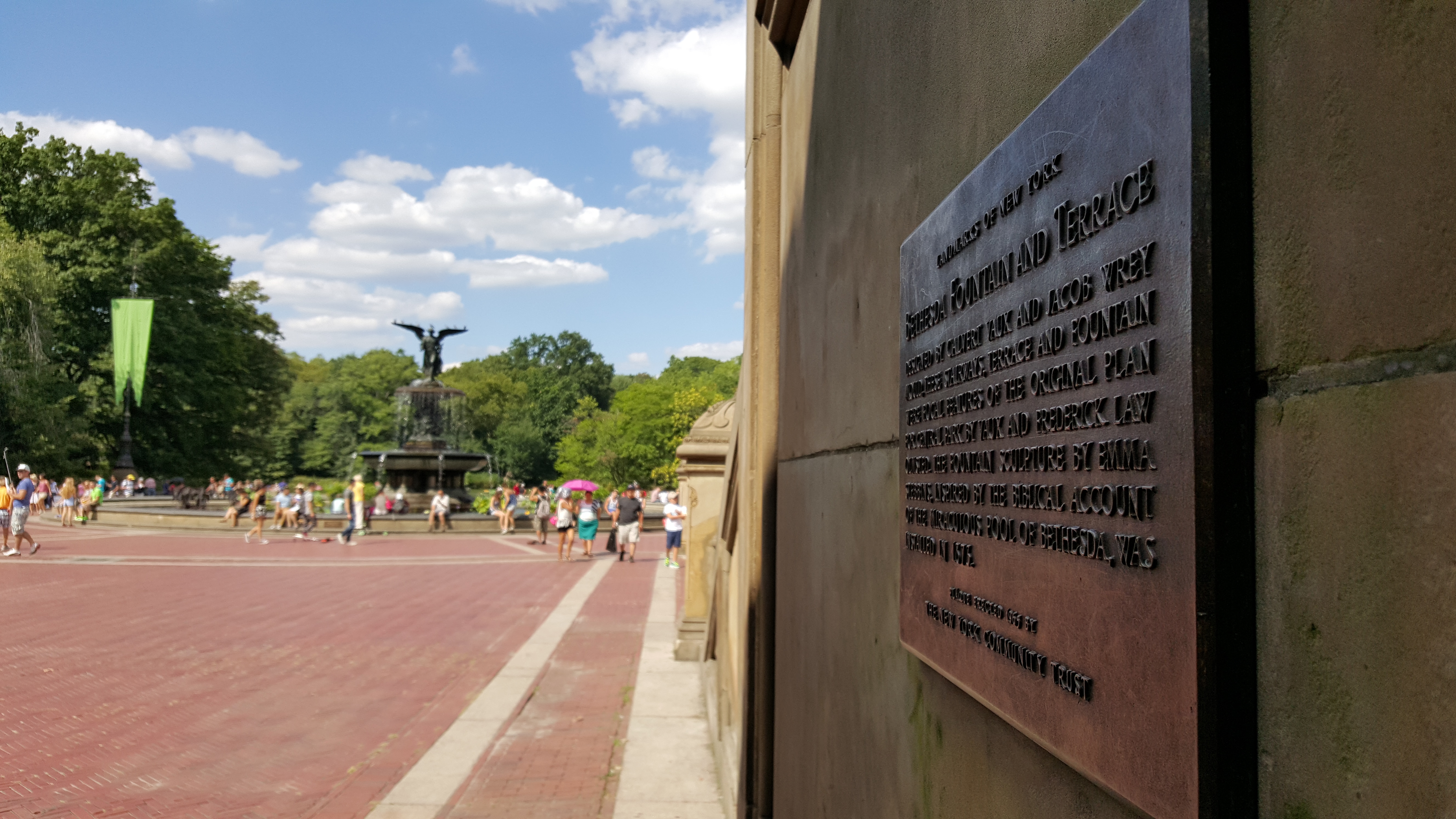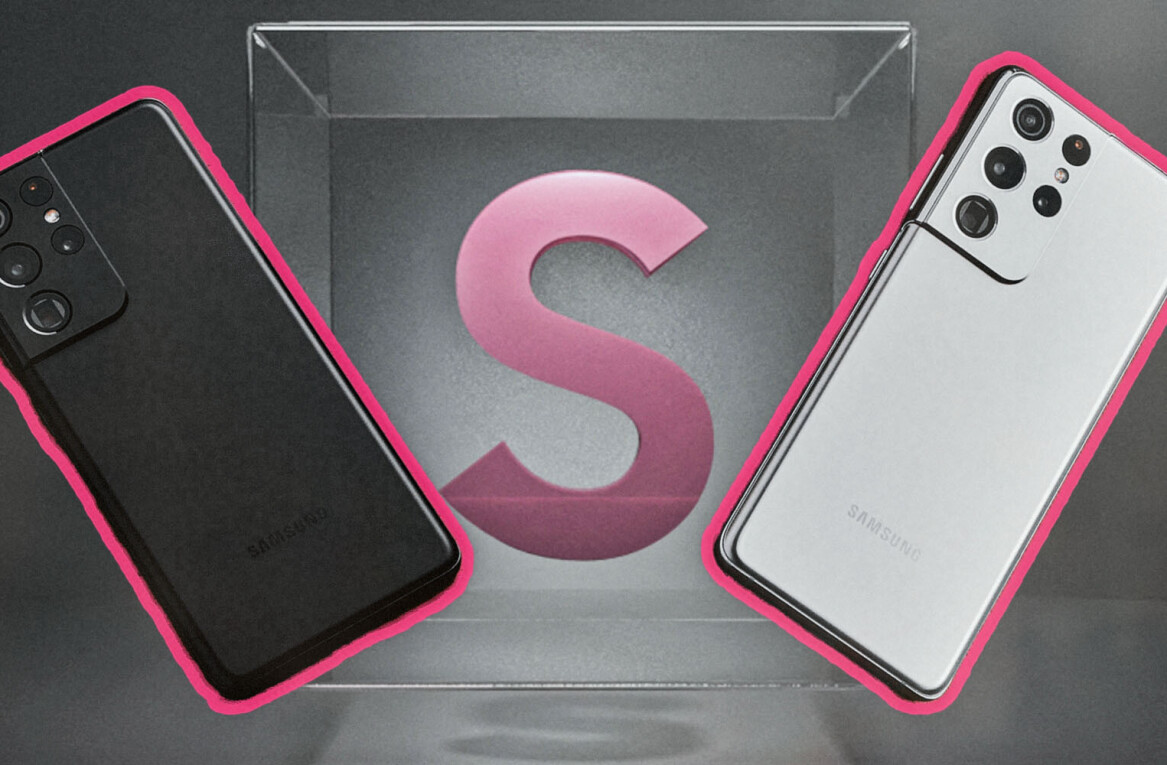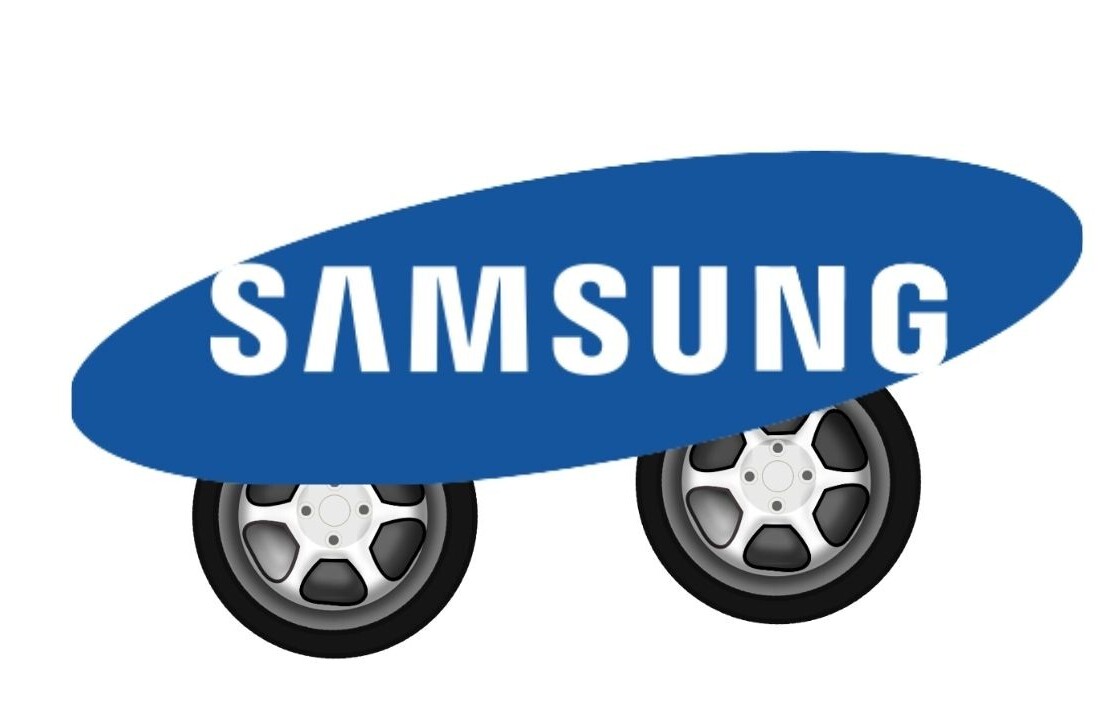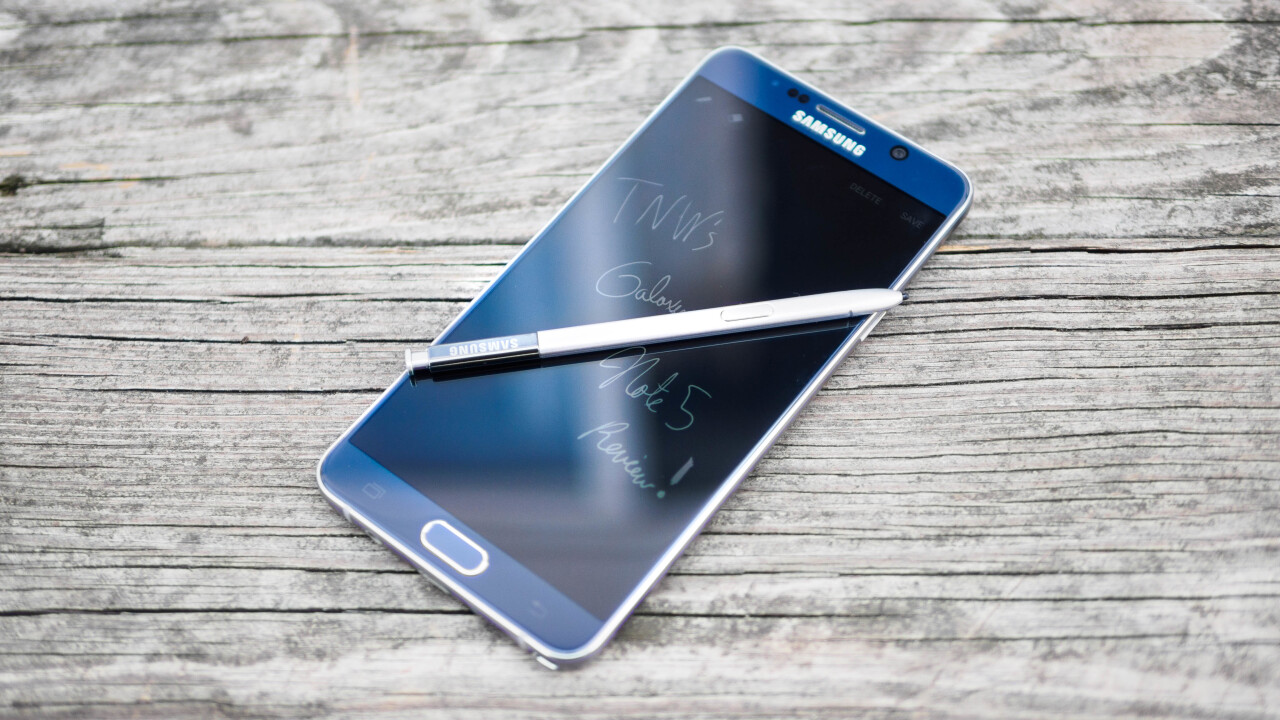
We’re living in a world with a new Samsung. Gone are the days of flimsy construction and uninspiring design, replaced by a new world full of beautiful glass and metal since the launch of the S6 and S6 Edge. It’s been great (mostly).
The Note 5 follows Samsung’s new design philosophy, making it the sleekest Galaxy Note phone yet. That’s mostly a good thing, but the removal of some power-user features left me torn. Note devices always represented Samsung’s most productivity-oriented phones, so why sacrifice features in the name of slimness?
Thankfully those worries washed away after spending more time with the Note 5. While some sacrifices remain questionable, not only is the Note 5 the best big phone Samsung has ever made; it might be the best phone you can buy anywhere right now.
Design
If you’ve ever seen a a Galaxy S6, then you know what the Note 5 is all about; they’re very similar from most angles except the Note 5 is larger to accommodate its 5.7-inch QuadHD screen.
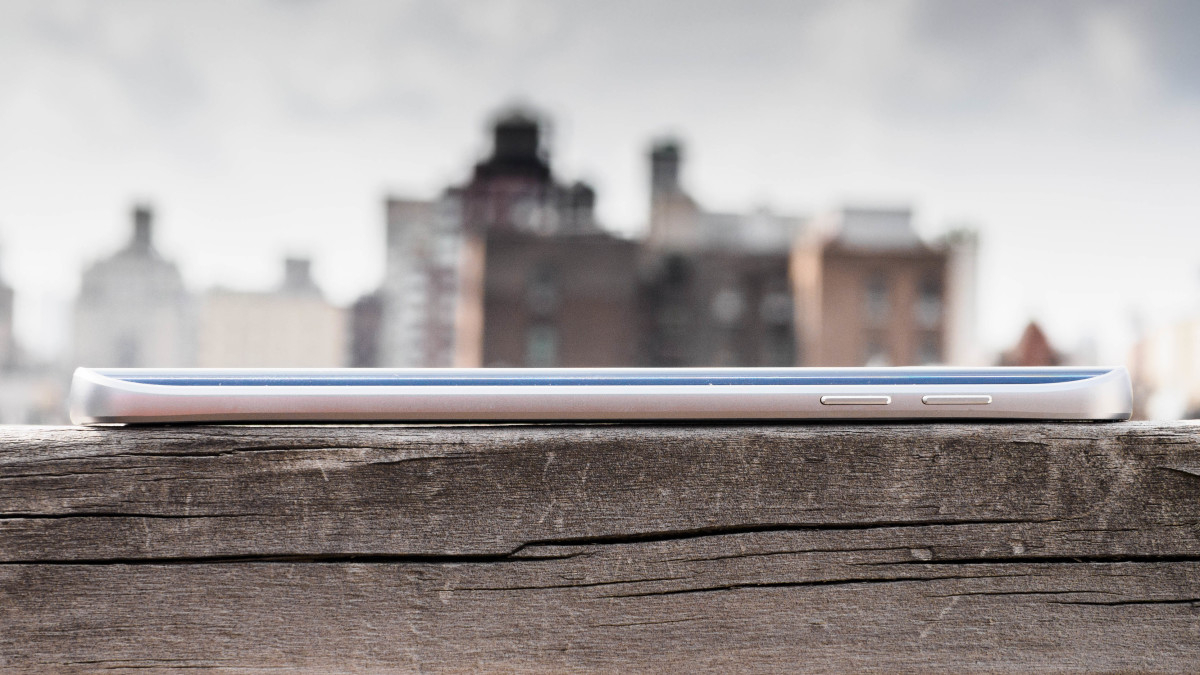
That also means it’s gorgeous. I reviewed the ‘Black Sapphire’ color, which is basically a metallic deep navy, and it’s one of the best looking phones I’ve ever handled, if not quite as flashy as any of Samsung’s Edge phones. The glass front and back panels are framed by aluminum, and everything about the phone feels tightly constructed.
The main difference compared to the S6 is that the back is now curves at the sides, which helps make it feel like you’re holding a device actually designed for humans. An almost complete lack of side bezels helps the Note 5 rest more comfortably in my hands than the Note 4, despite sharing screen dimensions.
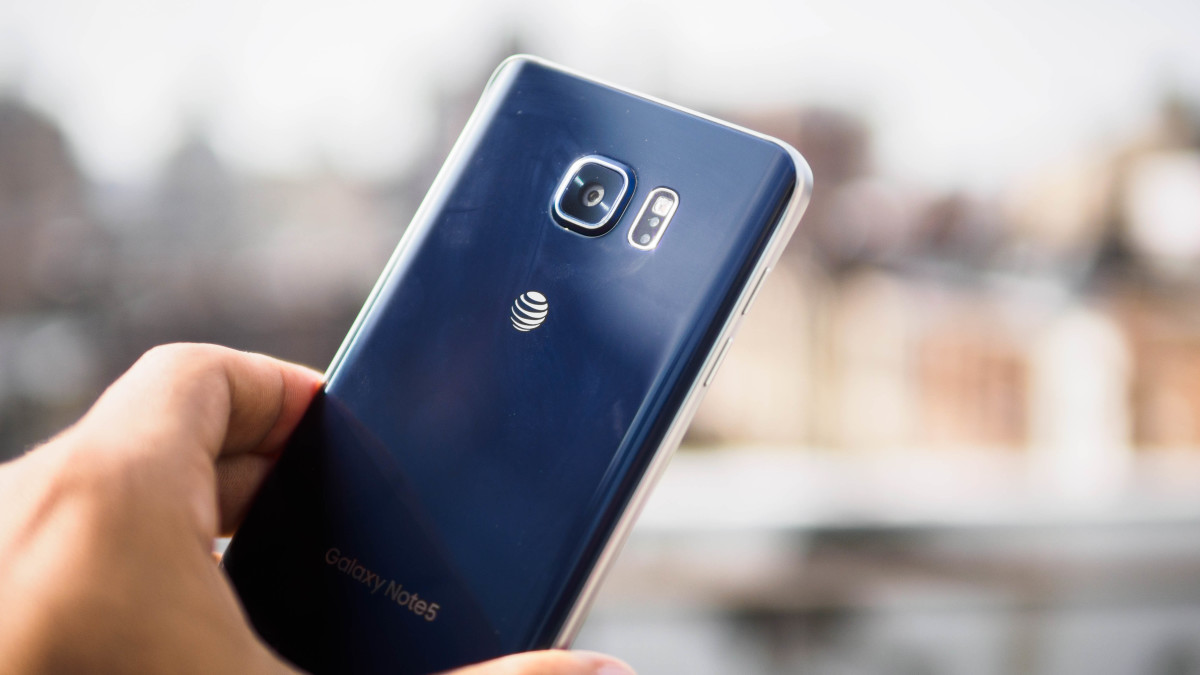
It’s also a hair smaller than the iPhone 6 Plus, which sports ‘just’ a 5.5-inch display. Granted, you won’t be using this phone with one hand much anyway, but it’s nice to know that Samsung did whatever it could to keep it manageable, and I didn’t find the glass to be too slippery (the HTC One M8 is worse). The narrow frame also makes the phone easier to hold as a notepad when using the included S-Pen, or when using Samsung’s one-handed mode feature.
Speaking of the S-Pen, it now clicks in and out of place (as opposed to just sliding out). You can even click it like a ballpoint pen while scribbling notes, even though that doesn’t actually do anything. Just make sure you don’t put it in backwards. Seriously, it’ll break your phone.
Hardware
As usual, Samsung’s made the new Note the most powerful device in its lineup. The handset uses the same excellent Exynos processor as on the S6 and S6 Edge, but this time it’s flanked by 4GB of RAM – more than some laptops – to make multi-tasking seamless.
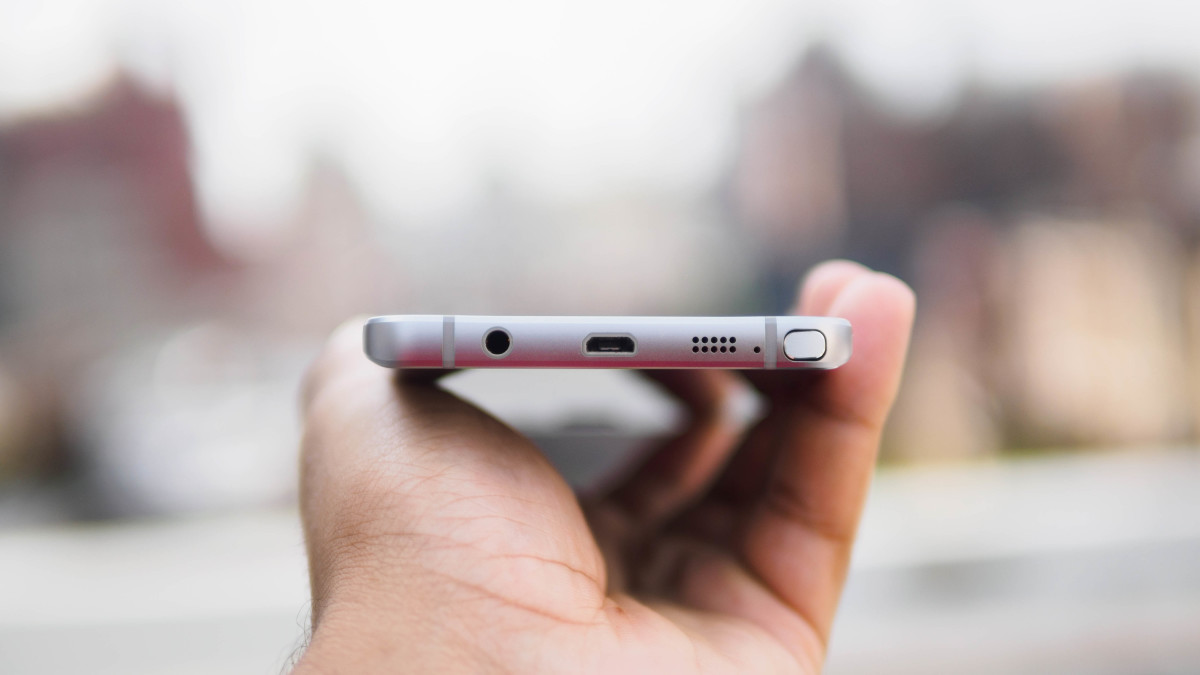
Other features include an excellent fingerprint scanner on the home button, and a unique optical heart rate sensor on the back. Next to it is the 16 megapixel camera, supplemented by a wide angle 5-MP shooter in the front.
There’s also NFC and support for Samsung’s new payment technology, which lets you use your phone even with standard card-swiping retail systems.
Samsung continues to use capacitive buttons instead of Android’s on-screen ones. I actually prefer this in most instances, as it means more of the screen is dedicated to content. If you’re going to have bezels, might as well use them for something.
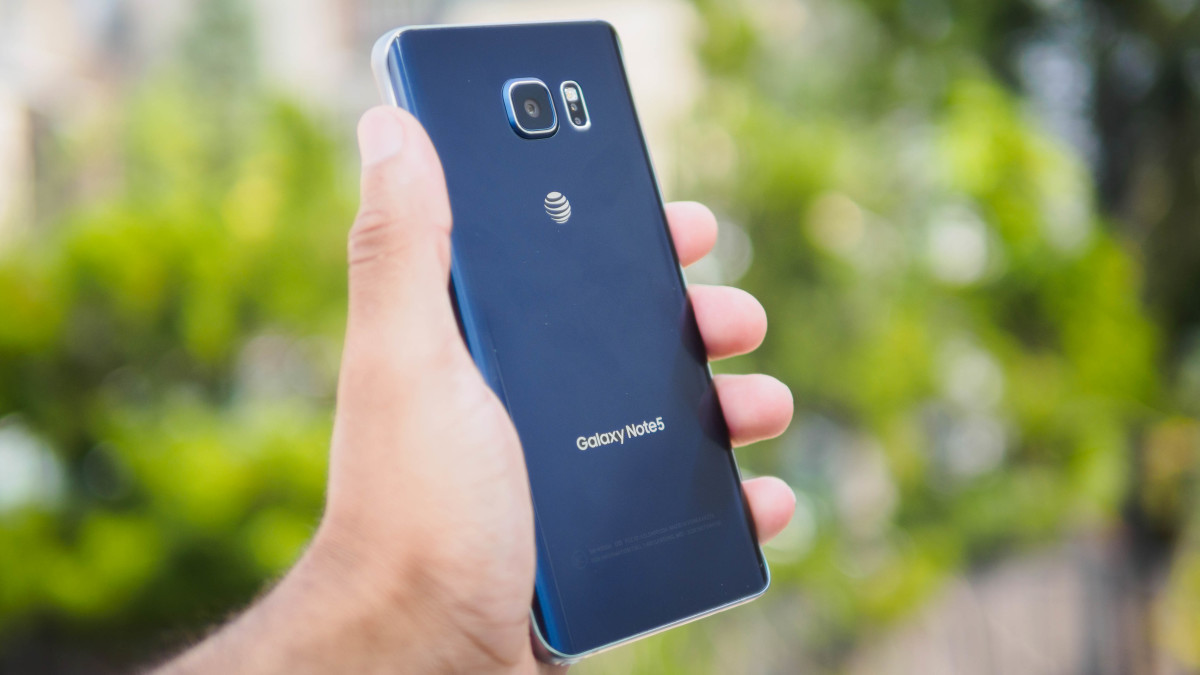
There are a few steps back from the Note 4, however. There’s no microSD card slot, so you’re limited to 32GB or 64GB of onboard storage, which can fill up quickly if you’re the type to watch movies one your phone (it’s a big screen after all). On my AT&T model, there was only 25GB available to users out of the box.
You’re also stuck with a 3,000 mAh battery, which is slightly smaller than the 3,220 mAh module found on the Note 4, and is not replaceable this time around. Thankfully, this isn’t much of an issue (more on battery life later).
Those compromises are somewhat expected from the move to a sealed construction, but one strange omission is the IR blaster – it was still available on the S6 and S6 Edge, so it’s kind of baffling to see it gone on the larger device. It’s not something everyone uses, but I’m personally sad to see it go – my phones have effectively replaced my TV remotes.
Still, despite some compromises, the specs are nothing to scoff at.
Display
Samsung’s always made good displays, but the Note 5’s screen is really something to admire.
The 2560×1440 resolution yields a very sharp 518 PPI. It’s not the densest we’ve seen, but you’d be hard-pressed to notice a difference compared to any other QuadHD phone. Colors are vibrant but never oversaturated, and the AMOLED tech means blacks are as dark as possible. Watching movies at night is a great experience without the distracting ‘dark grey’ backdrop of LCD panels.
On paper, the screen sounds identical to the Note 4’s, but colors are more accurate this time around (you can also adjust color profiles in the display settings). Moreover, despite using less power, the Note 5’s screen also gets significantly brighter.
That leads to perhaps my favorite thing about this display: outdoors visibility. Even under a summer’s midday sun with clear skies, I never had to shade the screen to read texts or browse the Web.
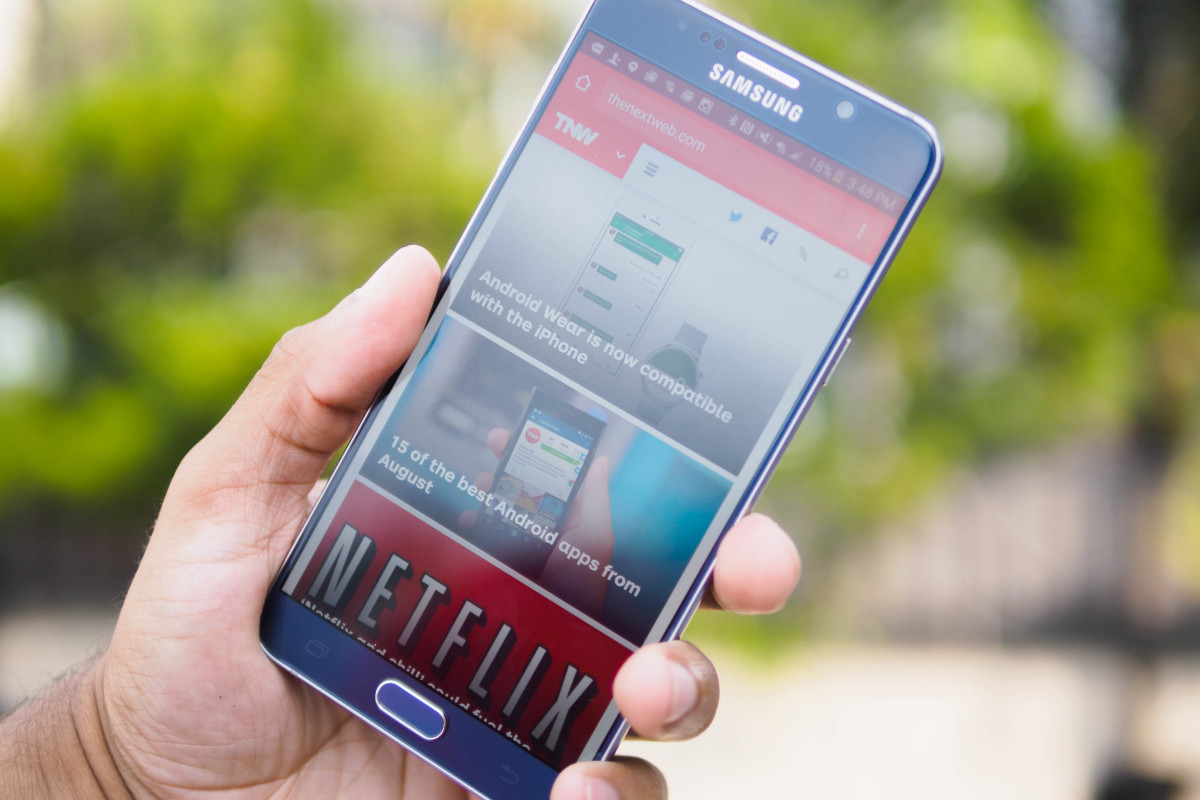
Its also worth noting that Samsung does a good job of selecting automatic brightness levels – I normally find my phones choose something dimmer than I prefer, especially while watching video, but Samsung always seemed to get it right. For some reason Samsung seems to be using automatic brightness instead of Lollipop’s more advanced adaptive brightness, however.
The only knock against the display is that there’s some very slight color shimmering when moving the phone around – and whites are a bit warmer than what I’d consider a ‘pure,’ but it’s hardly noticeable unless you’re looking for it.
Software
The Note 5 makes one of the very few cases where I’m glad an Android phone doesn’t use a stock version of Google’s OS.
Many of Samsung’s custom features actually make sense on a 5.7 inch screen. You snap two apps to run side by side, and a windowed mode lets you treat your phone more like a desktop; you can even minimize apps into floating icons. I was able to write an entire article on the phone by keeping two apps open side by side.

This productivity is amplified by a subtle but very significant change Samsung and many other manufacturers should have implemented a long time ago: using a lower display scaling. Basically, you can get more out of the Note 5’s screen real estate than almost any other Android phone.
Normally, Android scales smartphone displays so you can only fit so much content regardless of you screen size. UI elements look the same relative to other parts whether you’re on a Nexus 4 or a Nexus 6. On the Note 5, however, Samsung wisely chooses to use a lower scaling setting, which makes the experience somewhat closer to using a small tablet.
It means 25 icons per page in the Google Now launcher instead of the usual 16. It also means UI elements in apps are smaller, so more space is dedicated page content when Web rowsing (which makes the split-screen feature a lot more useful). And since the Note 5 uses capacitive buttons, you’re not wasting screen space for on-screen navigation either.
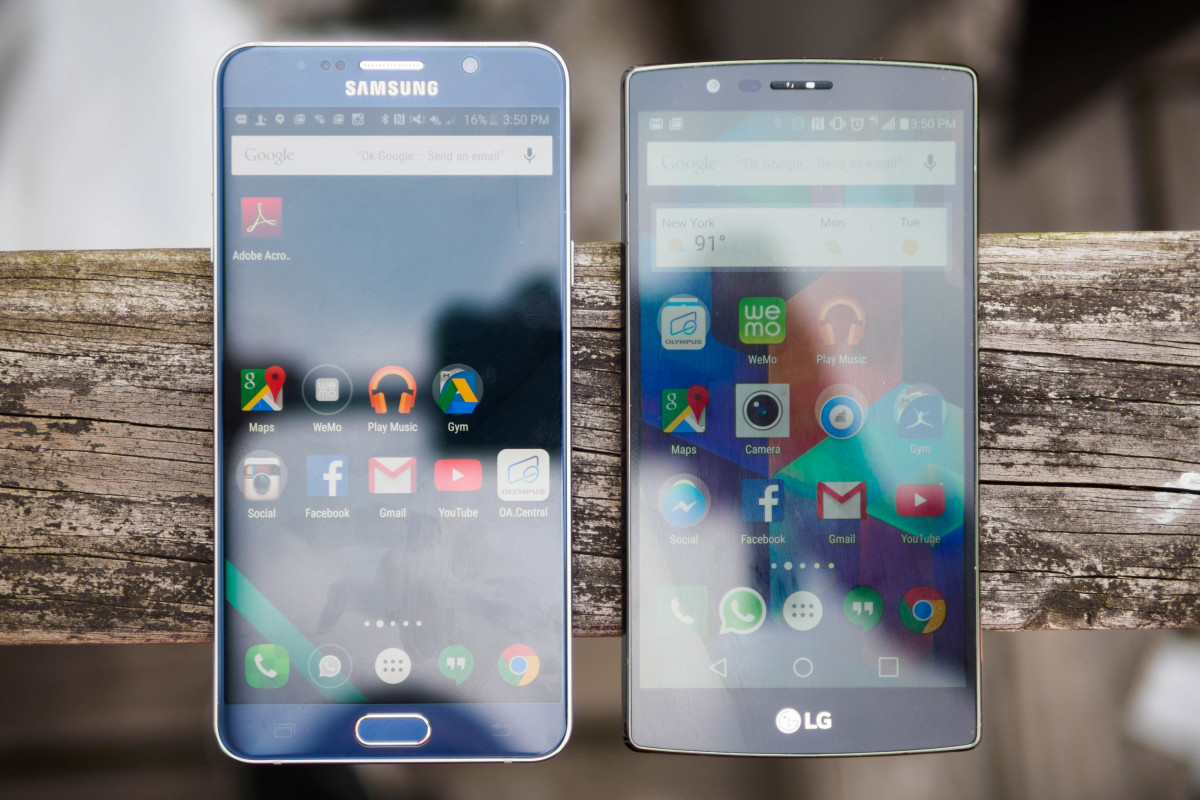
This all adds up to making the Note 5 feel more like a small computer than just a smartphone with a large screen.
Samsung cleaned up its TouchWiz skin for the S6, a the trend with continues on the Note 5. If you’re coming from an older Samsung model, the beeps and boops of the interface have been reduced, and many of TouchWiz’s features have been cut down or removed by default.
Still, there are a number of useful additions aside from the aforementioned multitasking.

Samsung includes a surprisingly extensive theme store, which lets you replace TouchWiz’s default gaudy look; I downloaded a free Material Design theme and never looked back.
There’s also a one-handed mode which shrinks the display down to the bottom left or right corner. I found myself using it a lot; it’s a life-saver when using the phone on the go. I also much prefer it to Apple’s implementation, which only slides down the top half of the screen temporarily, as you can effectively use the Note 5 with one hand the entire time if you want to.
Then of course, there’s the S-Pen. By far the best new feature is the ability to write on the display without unlocking the device. It’s genius and takes about 1.5 seconds – simply pull out the pen and start writing. Put the pen back in and your note is saved.
It’s much better than needing to unlock the device and enter the S Note software, and likely made me use the stylus a lot more often than I might’ve otherwise, as it’s quicker than using actual paper and pencil.
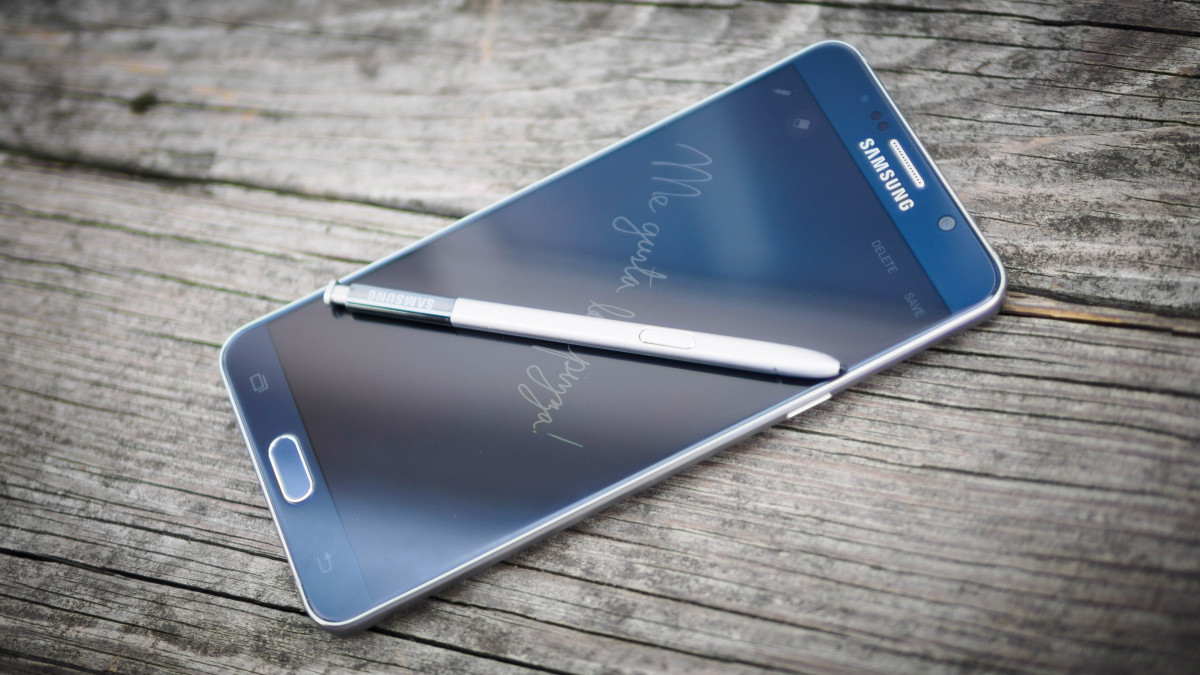
There’s also a new ability in the Screen Write app which lets you scroll to capture entire documents or Web pages vertically – I could see that coming really in handy for annotating long documents.
Camera
The Note 5 (and S6 Edge+, which has identical hardware and software) is probably the best Android cameraphone, borrowing the 16 megapixel sensor and f/1.9 lens from the S6 but adding a few features to propel it higher than competitors like the LG G4.

First off, Samsung still has the best quick-launch feature of any phone without a dedicated camera button. Double tap the home button and you’ll instantly be taken to the camera, no matter where you are in the UI, and regardless of it your phone is locked or not.
More than just good hardware, Samsung’s greatest strengths lie in its software and processing. By default, the camera is in auto-everything mode, and it’s one of the few Android phones where you can consistently achieve good results by just pointing and shooting.

Exposure is usually spot on and focusing is very fast. White balance was nearly always on point, and Samsung has some of the best colors in the business, with accurate skin tones and overall saturation (though be warned that just about every picture looks better on the phone’s AMOLED display than on your typical monitor).
Low light performance is again solid, clearly aided by the optical image stabilization and wide aperture, but also benefitting from restrained noise reduction with decent detail retention. Images are a tad over-sharpened on the whole, meaning its not a good idea to crop or zoom too much, but for most Web and mobile viewing purposes, there shouldn’t an issue.
Dynamic range is good for a smartphone, but more importantly, the automatic HDR function is really, really good. You don’t have to manually turn it on, as the phone will smartly choose when to combine multiple exposures into one HDR shot depending on the lighting circumstances, and it almost always produced tasteful results without the gaudiness oversaturated effect from HDR in some other devices.
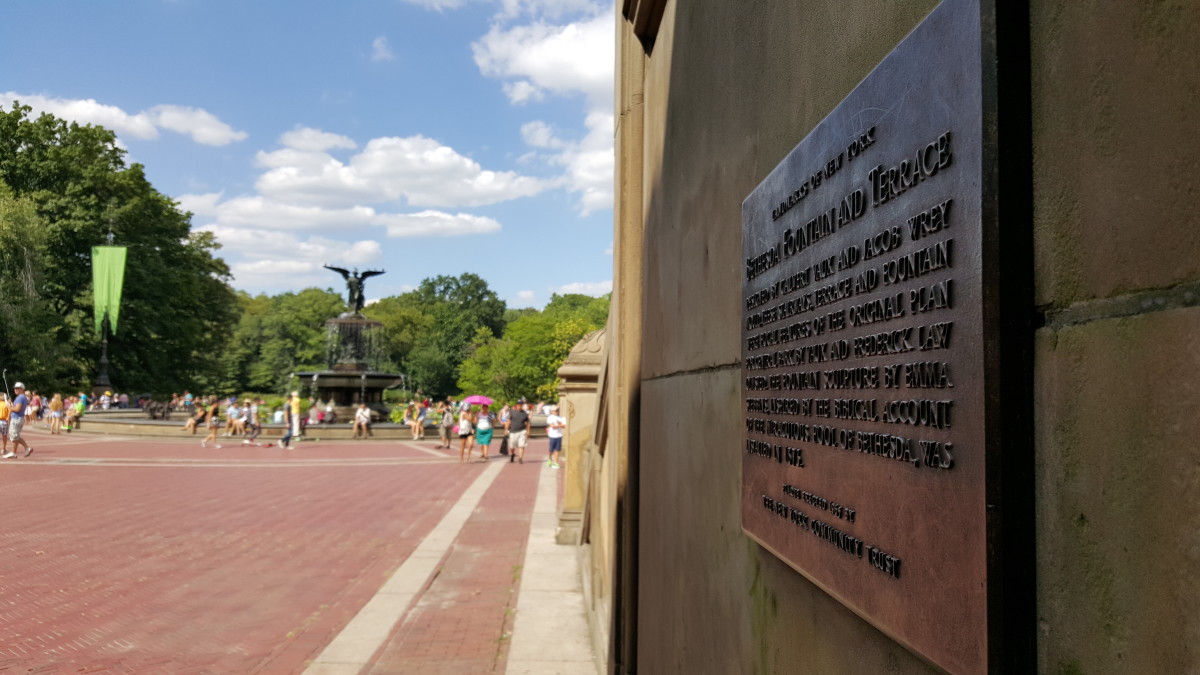
It also works incredibly quickly; there’s nary a difference in delay between HDR shots and regular stills, and you can usually just fire away at the shutter rapidly without significant lag. You can force HDR on or off if you’d prefer, though.
That said, even with HDR on, the phone did sometimes blow out highlights in skies; I found it prefers to pull up the shadows more than pull down the highlights, so it helps to manually underexpose slightly if your skies are blown out.

The main improvements compared to the S6 are in the updated ‘Pro’ mode. You can now set your shutter speed manually, making it a true manual mode, and helping you shoot better low light photos and enabling cool slow shutter effects. The Note 5 actually tends to overexpose in dark settings, so the added control can help make images a bit more true to life, too.
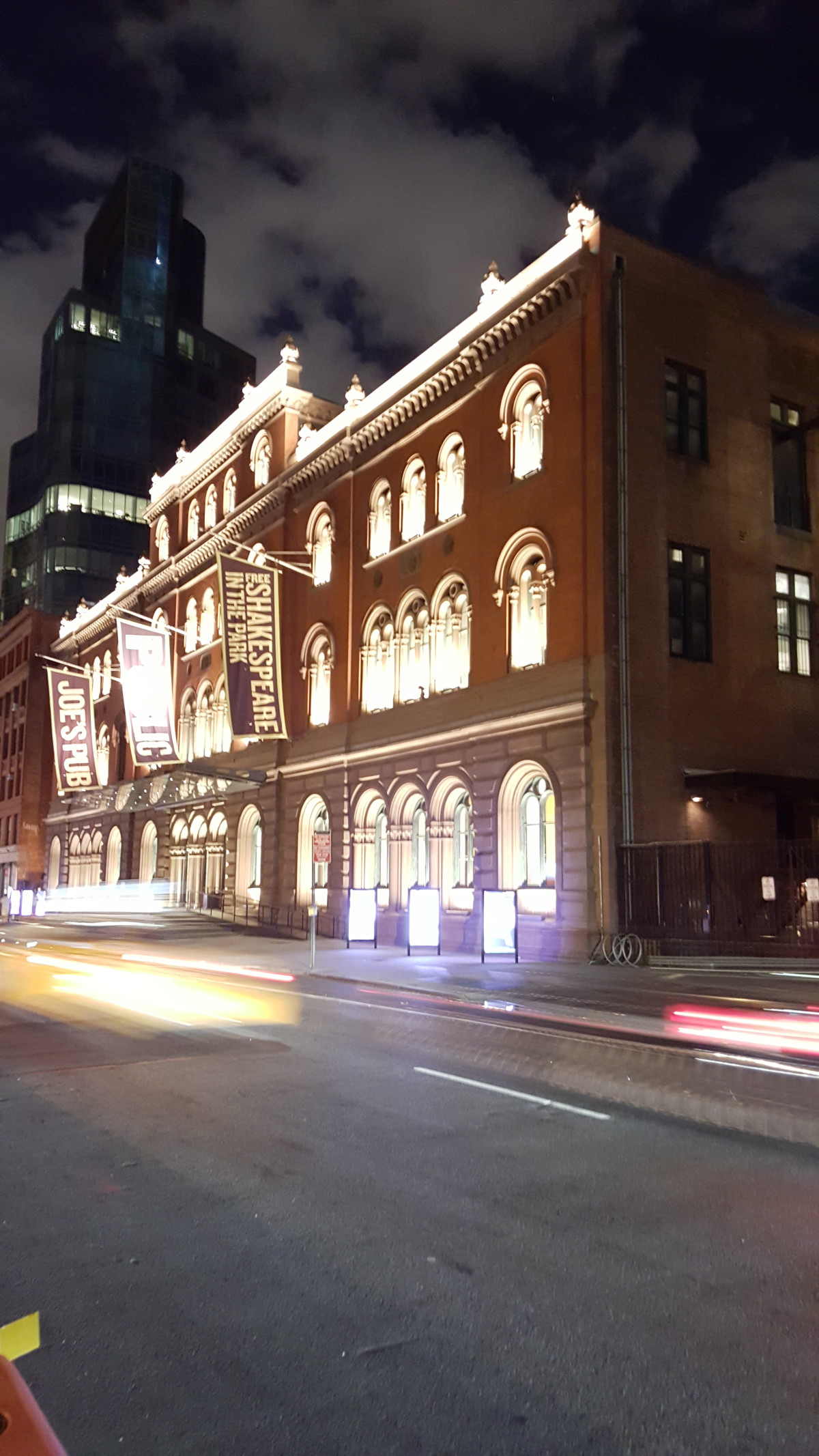
Additionally, the Note 5 is the first Samsung phone with native RAW support, which can lead to big image quality improvements for serious photographers. I also love that you can add features to the camera via a custom app store of its own – more manufacturers should implement this.
As for the 5-megapixel front-facing camera – it’s pretty good. The main thing going for it is again Samsung’s processing, which renders skins tones well under most lighting conditions. It defaults to a ‘beauty’ mode the first time you open it; I’d rather my skin not look plastic, so I disabled that immediately.
I’m also mildly disconcerted by the included retouching tools – a face slimmer and eye-enlarger – but to each their own, I guess.

Meanwhile, video mode now supports livestreams. Simply connect your YouTube account with the Live Broadcast function, invite some friends, and they can watch you go about your day. I doubt many people will be using it right away, but as Periscope and Meerkat grow, I wouldn’t be surprised to see more users catch on.
Samsung also now uses an improved combination of optical and digital image stabilization for video, which makes for some pretty smooth footage. The new hybrid stabilization is limited to 1080p though, as it slightly crops the image. That’s fine though, as 4k video looks plenty smooth with just OIS.
Some more untouched samples, mostly shot with default settings:
Performance and battery life
There isn’t much to say about overall performance, and that’s a great thing.
The Note 5 is the quickest Android phone I’ve used, even compared to stock Android devices. I immediately downloaded most of the software I run on my G4, yet the difference in speed opening and switching among apps was very tangible.
I’ve grown used to having applying some elbow grease to Android phones: closing background apps, uninstalling unnecessary software, etc. But the Note 5 zipped through pretty much everything, surely aided by the 4GB of RAM. Apps opened instantly, the fingerprint sensor worked reliably (like on the S6, it now works with a tap instead of a swipe), and multi-tasking was a charmingly stutter-free. I was simply powerless to slow it down, try hard as I might.
Naturally, all that horsepower paired with just a 3,000 mAh battery made me worry about longevity. Thankfully, it looks like Samsung has worked a bit of optimization magic; I’m currently sitting on a 30 percent charge with 23 hours off the charger and nearly 3 hours of screen on time.
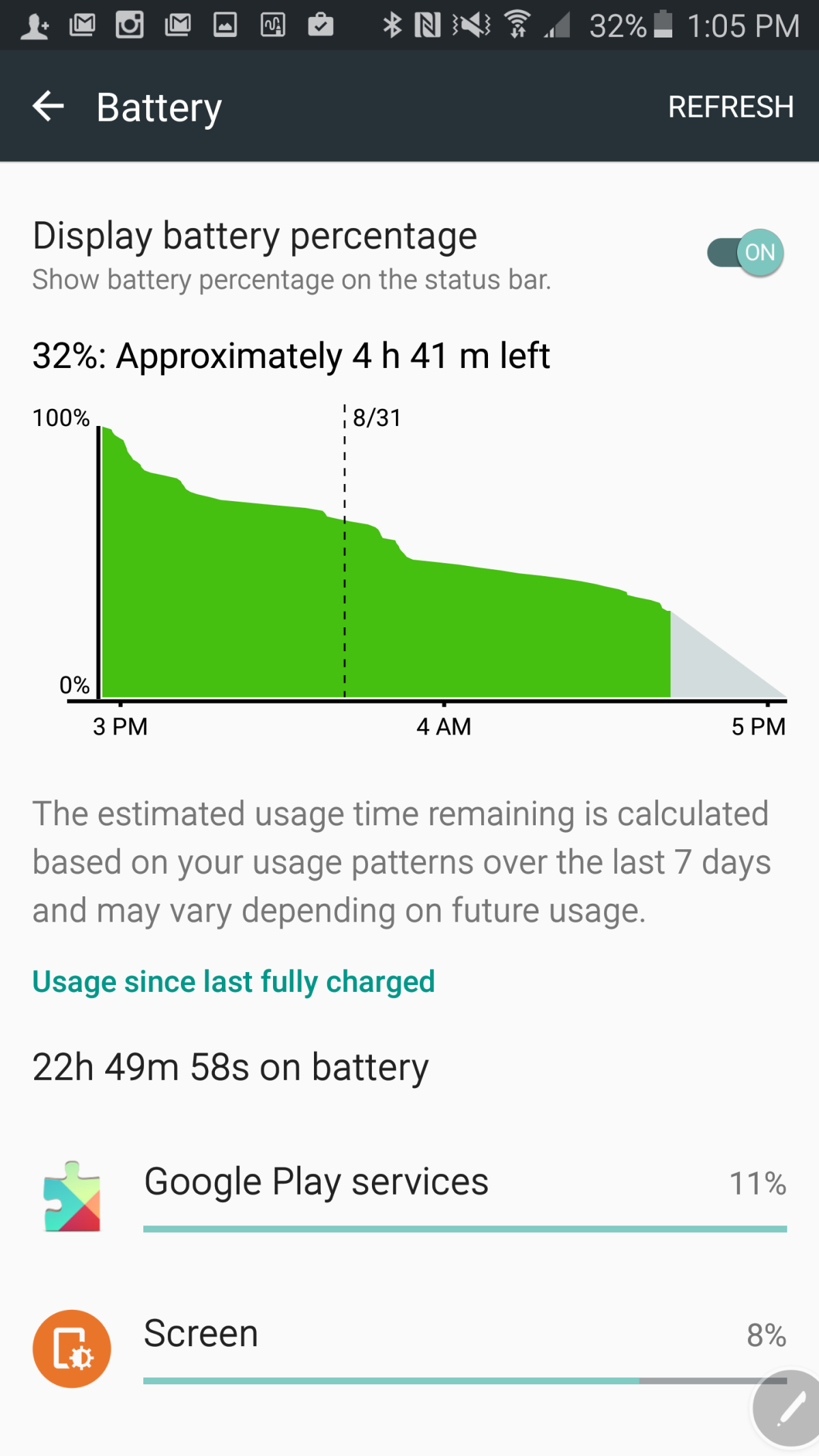
I’ve generally kept the brightness on auto and streamed music for several hours, with some light gaming and a whole lot of web browsing, and on every instance it’s outlasted my LG G4 with its larger battery and smaller scren.
It hasn’t all been peachy though; I was alarmed my first full day with the device when it went from a full charge to 0 percent in less than seven hours. I taxed the phone quite a bit though, taking a million photos, streaming music all day and using it for some tethering. I haven’t been able to replicate that type of drainage since, and it always lasts through the end of the day, so it might’ve been some sort of fluke.
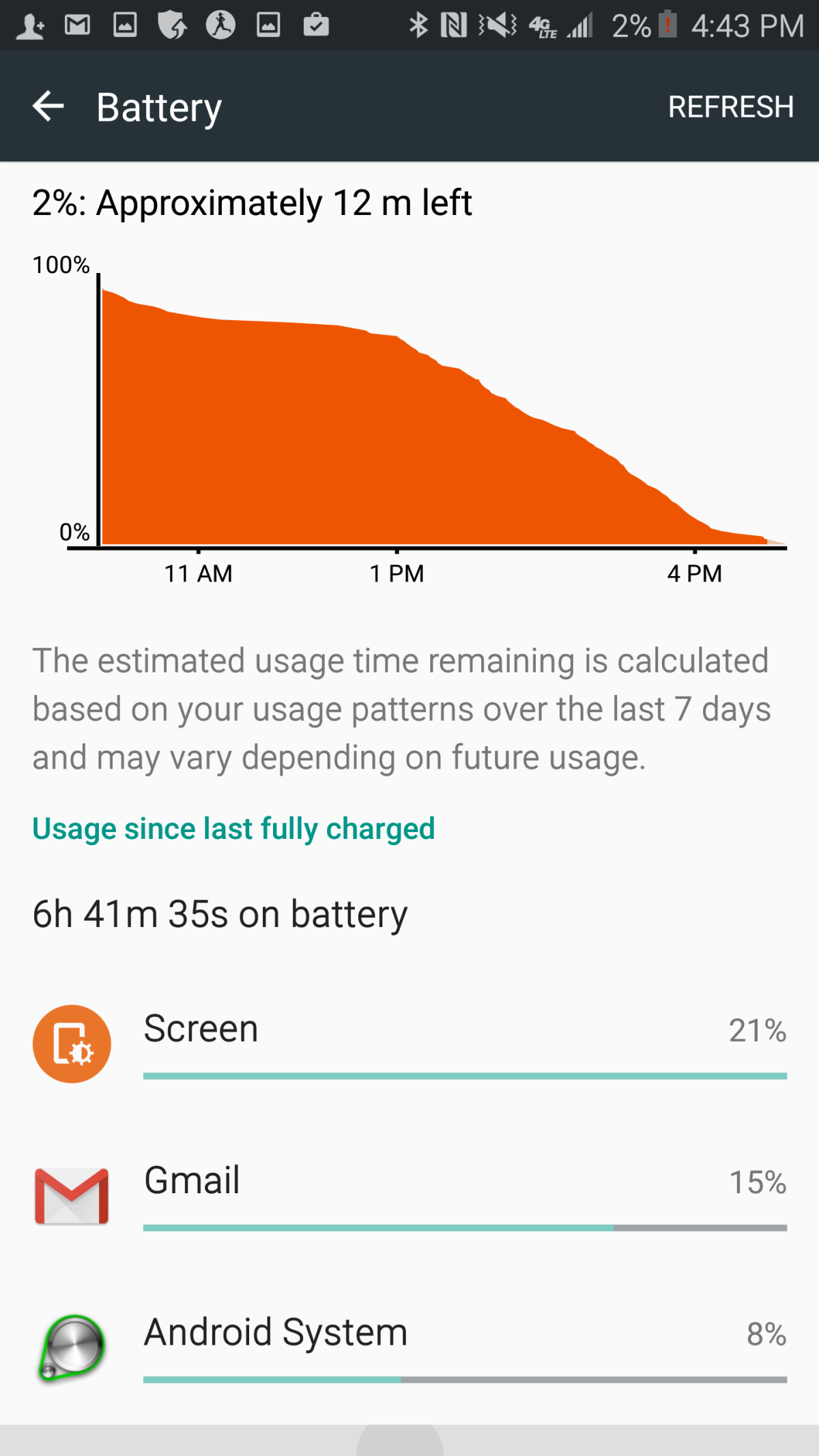
On the other hand, the Note 5 seems to play video really efficiently. I watched about four hours of movies in one session and still had over 50 percent of my battery left.
If you do happen to kill the battery, it charges really, really fast. I was able to go from a completely dead battery to 96 percent in about an hour, and it hit 65% in about half that time. And while I couldn’t test it myself, Samsung claims the Note 5 can now charge wirelessly more quickly than most devices can through a plug (if you use a $70 wireless charger).
Still, I can’t help but imagine if Samsung had just stuffed in a huge 3500-4000 mAh battery in there, like the Droid Turbo. It’s a two-handed device anyway; Samsung could’ve made something really special with a two-day battery.
Conclusion
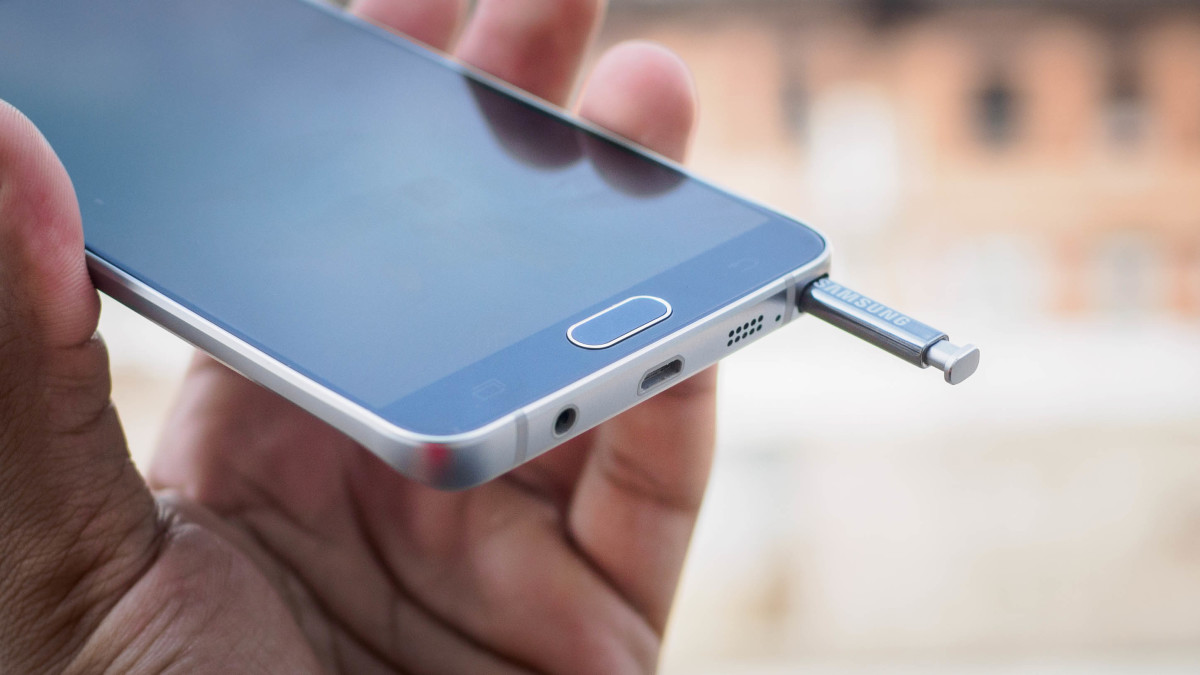
I didn’t expect to like the Note 5 as much as I do. The idea of sacrificing power-user functionality on a device made for power users didn’t sit well with the tinkerer in me, and as someone who uses a microSD card every day, I came into this review fully ready to complain about sacrificed amenities.
It turns out none of that really matters. The Note 5 is simply a really good big phone.
It does very little wrong and a whole lot right. The design, display, camera and performance are all best in class, and the phone feels smaller than it looks. It’s still the only phone with a stylus worth using, and I think anyone would pull out the S-Pen at least occasionally thanks to Samsung’s improved software and multi-tasking features.
Meanwhile, the battery, while not the biggest we’ve seen, should have no trouble getting you through a full day. In fact, that alone makes me highly recommend getting Note 5 (or S6 Edge+, with its basically identical performance) over the S6 or S6 Edge, which can hardly hold a charge for a day.
There’s no denying Samsung is abandoning an important subset of its core users, but as Apple wisely adapted to the large screen trend with the iPhone 6 and 6 Plus – even while alienating fans of the small phone camp – Samsung has recognized that creating a great phone today is about more than just stuffing in every feature possible.
It may be a bittersweet trend for those of us who crave more expandability from our mobile devices – surely an SD card slot would fit somewhere – but if that’s what it took to make the Note 5, then so be it. If you don’t need those extra features and don’t mind the size or the $700 – $740 unlocked US price tag (it varies among carriers), the Note 5 is probably the best all-around phone you can buy right now.
Get the TNW newsletter
Get the most important tech news in your inbox each week.






